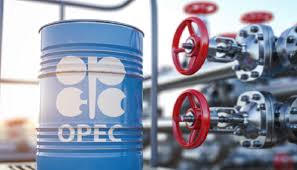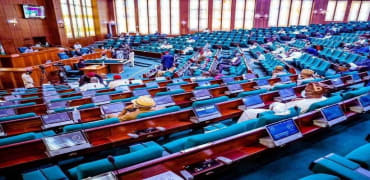Nigeria Surpasses OPEC Oil Quota as Inflation Dips to 22.22% in June
Nigeria Surpasses OPEC Oil Quota as Inflation Dips to 22.22% in June
Abuja, Nigeria —
Nigeria recorded a significant economic milestone in June 2025, as it exceeded its OPEC crude oil production quota for the second time this year, while also witnessing a drop in headline inflation to 22.22%, signaling tentative progress in stabilizing key macroeconomic indicators.
Crude Oil Output Rises Above Target
According to the Organisation of Petroleum Exporting Countries (OPEC) in its July 2025 Monthly Oil Market Report (MOMR), Nigeria produced 1.505 million barrels per day (bpd) of crude oil in June, marginally exceeding its OPEC quota of 1.5 million bpd.
This marks the second time in 2025 that Nigeria has exceeded its assigned production target—the first being in January. Data from the Nigerian Upstream Petroleum Regulatory Commission (NUPRC) also confirms the figure, showing an average daily crude output of 1,505,474 bpd, representing 100.4% of the quota.
When condensates are included, Nigeria’s total daily oil output reached an average of 1.697 million barrels per day, with a peak production of 1.82 million bpd and a low of 1.61 million bpd during the month.
The development reflects a gradual rebound in Nigeria’s oil sector, driven by improved security in the Niger Delta and increased investment in upstream operations. The country aims to sustain this momentum to support its ambitious ₦54.99 trillion 2025 budget, heavily reliant on oil revenues.
Inflation Eases, But Monthly Pressures Persist
Meanwhile, the National Bureau of Statistics (NBS) reported that Nigeria’s headline inflation rate eased to 22.22% in June, down from 22.97% in May, indicating a 0.75 percentage point decline. Compared to June 2024’s figure of 34.19%, the drop represents a notable year-on-year decrease of 11.97 percentage points.
The decline coincides with the rebasing of the Consumer Price Index (CPI), now using 2024 as the new base year. However, despite the annual moderation, month-on-month inflation rose to 1.68% in June, up from 1.53% in May, reflecting continued upward price pressure in key sectors such as food, housing, and transportation.
The CPI index itself climbed from 121.4 in May to 123.4 in June.
Food Inflation Falls, But Prices Still Rising Monthly
Food inflation, a critical component of the CPI, stood at 21.97% year-on-year in June, a sharp decline from 40.87% in June 2024. The improvement is largely attributed to the new base year, rather than significant relief in food costs.
However, on a monthly basis, food inflation increased to 3.25% in June, up from 2.19% in May. Staples such as tomatoes, pepper, green peas, crayfish, meat, and plantain flour drove the surge.
The average annual food inflation rate for the 12 months ending June was 28.28%, down from 35.3% in the same period the previous year.
Core Inflation and Regional Disparities
Core inflation—excluding volatile items like food and energy—also fell to 22.76% year-on-year, compared to 27.4% in June 2024. However, the month-on-month rate rose to 2.46% from 1.10% in May, suggesting renewed pressure in non-food categories.
Urban inflation dropped to 22.72% year-on-year (from 36.55%), while rural inflation eased to 20.85% (from 32.09%). Yet, both regions experienced rising monthly inflation, especially in urban areas where price growth hit 2.11%.
State-Level Inflation Insights
State-level data revealed stark contrasts:
Highest inflation (YoY): Borno (31.63%), Abuja (26.79%), Benue (25.91%)
Lowest inflation (YoY): Zamfara (9.90%), Yobe (13.51%), Sokoto (15.78%)
On a month-to-month basis, the biggest price hikes were seen in:
Ekiti (5.39%)
Delta (5.15%)
Lagos (5.13%)
States that recorded a decline in monthly inflation included Zamfara (-6.89%), Niger (-5.35%), and Plateau (-4.01%).
Outlook: Progress with Caution
While the inflation slowdown offers cautious optimism, the persistent month-on-month rise in prices underscores continued cost-of-living challenges for Nigerian households.
On the oil front, exceeding the OPEC quota brings much-needed revenue relief, but sustaining and optimizing crude production—alongside diversifying the economy—remains key to long-term fiscal stability.
As Nigeria approaches the second half of 2025, all eyes will be on how monetary policy, security in oil-producing areas, and global oil prices evolve in shaping the nation’s economic trajectory.
By Haruna Yakubu Haruna



















